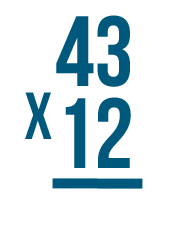Multiplying Large Numbers
On the past few pages, you've practiced multiplying large numbers with small ones. What happens when you have to multiply two large numbers?
For example, imagine that your cell phone bill is $43 a month. There are 12 months in a year, so to find out how much you pay for your phone every year, you could solve for 43 x 12. You'd write the expression like this:
This problem might look hard at first, but don't worry. If you can multiply small numbers, you can multiply large ones too. All you have to do is divide this large problem into a few smaller ones. As always, you can use your times table to help.

To solve a large problem like this, start with the same steps you use to solve any other multiplication problem.
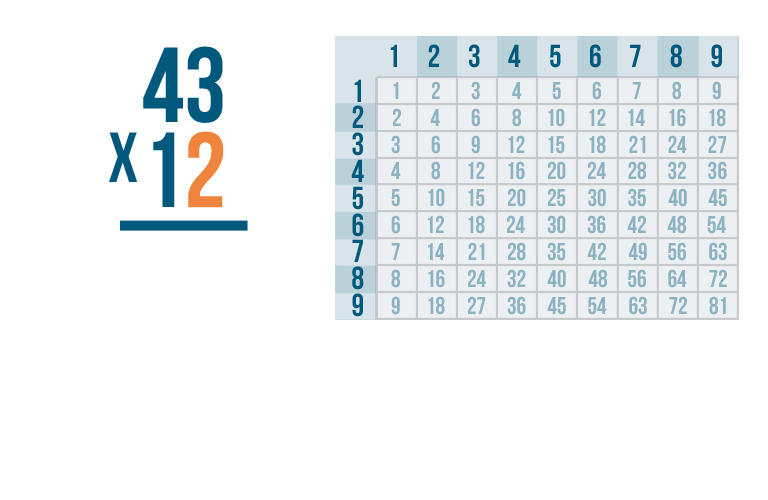
As always, you start with the digit on the bottom right. Here, that's 2.
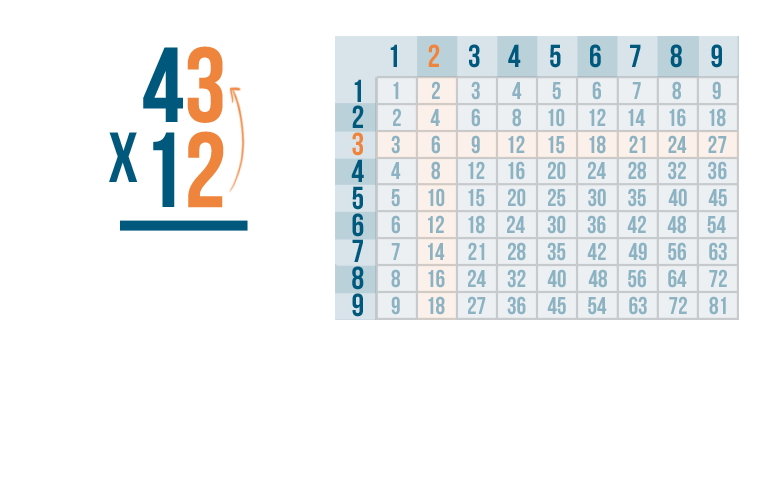
We'll multiply it by the digit on the top right, 3.
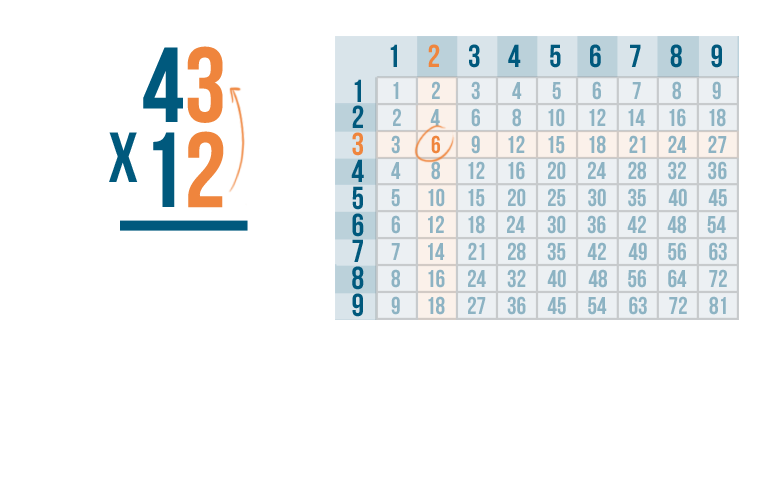
Thanks to our times table, we know that 3 x 2 is 6.

We'll write the 6 beneath the line, to the far right.
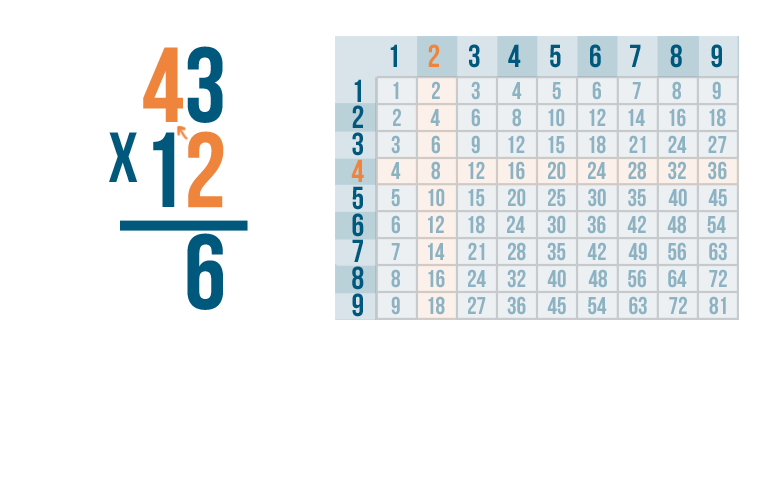
Next, we'll multiply 2 x 4.

2 x 4 is 8.

Write 8 below the line, right under the 4.

OK. The first half of the problem is done.
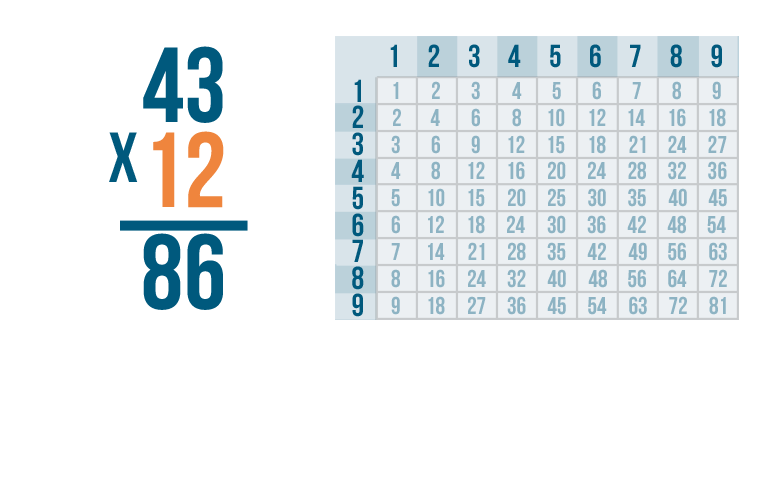
Now it's time to look at the bottom number again.

We're going to multiply the next digit. That's 1.
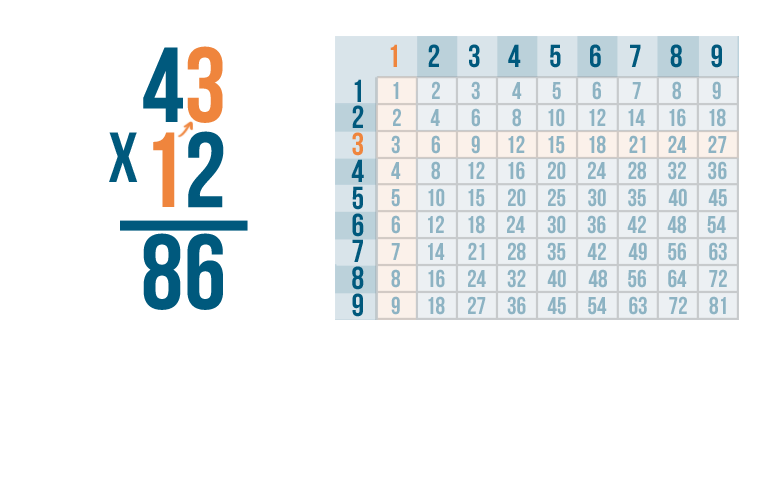
First, multiply 1 by the top number on the right. Here, that's 3.

1 x 3 is 3...but we're not going to write 3 in the usual place.
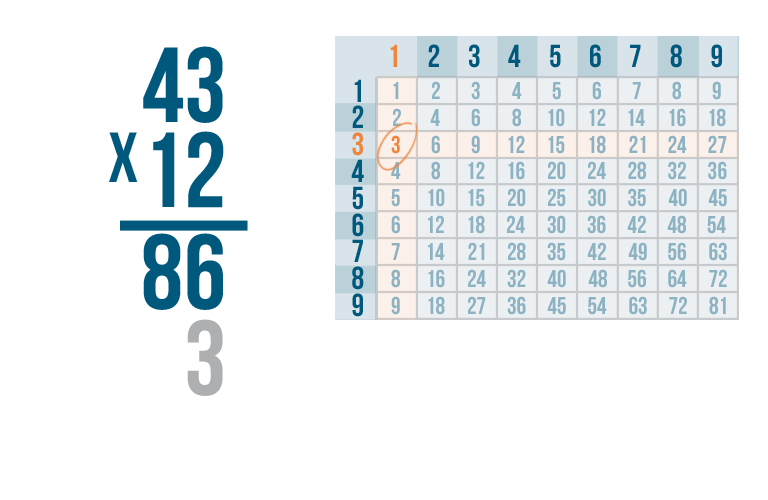
Instead of writing the 3 to the right, like we usually do...

Instead of writing the 3 to the right, like we usually do... we're going to write it one place to the left, under the second set of digits.
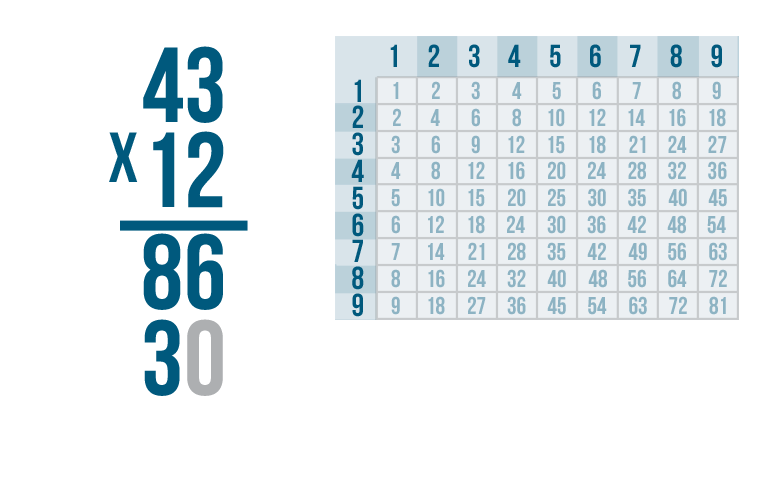
It's a good idea to mark the space you left blank. That way, you'll know not to accidentally write anything there. We'll add a 0, since zero is the same as nothing.
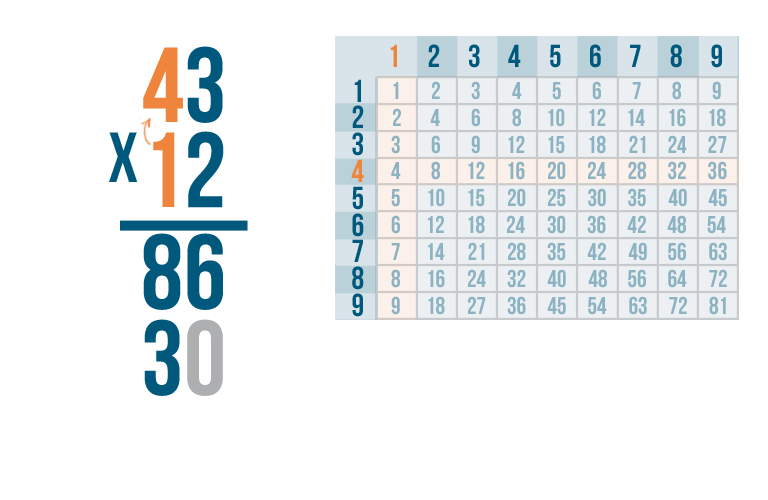
Now, let's multiply the last set of numbers. That's 1 x 4.
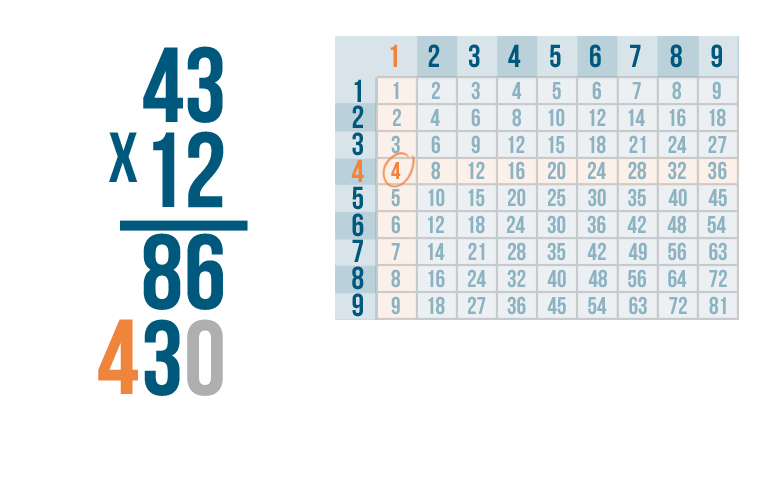
1 x 4 = 4. We'll write the 4 below the line, to the left of the 3 we just wrote.

One last step. To get our final answer, we have to add the numbers we just got from multiplying.

As always, we'll start adding from the right.
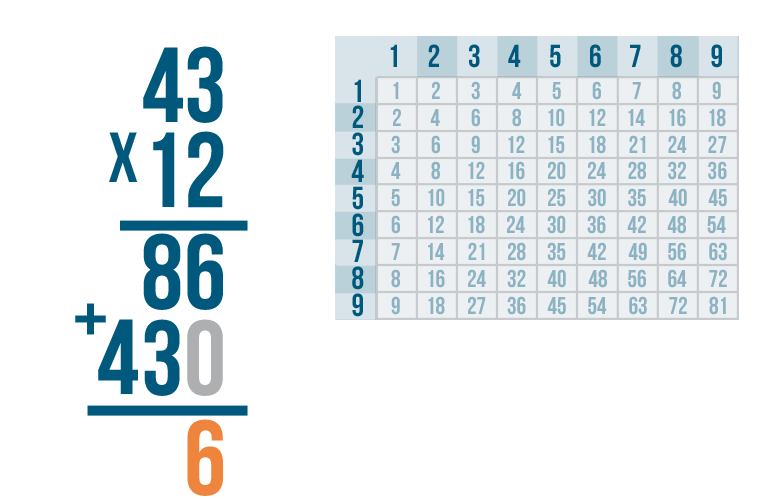
6 + 0 is 6. We'll write 6 below the line.
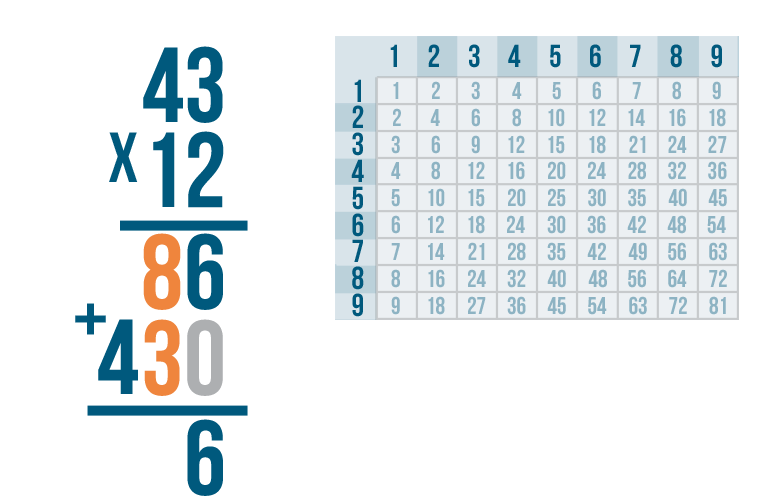
Next, 8 + 3.

8 + 3 is 11. Since 11 is a 2-digit number, we'll have to carry.
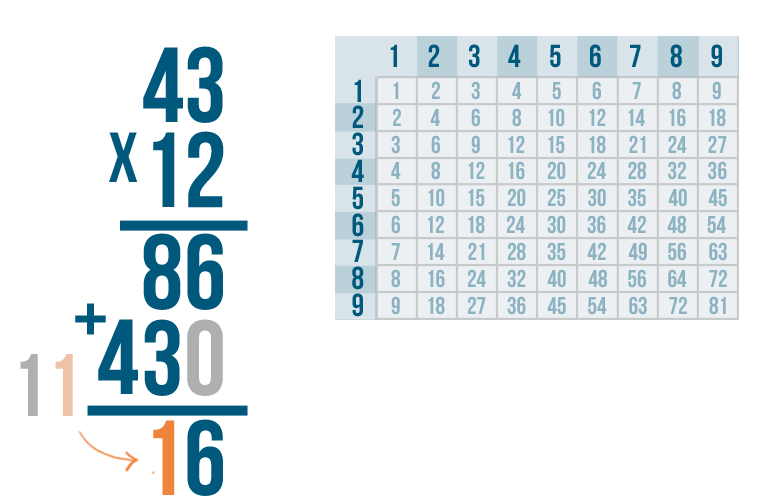
Write the right digit, 1, under the 8 and 3...
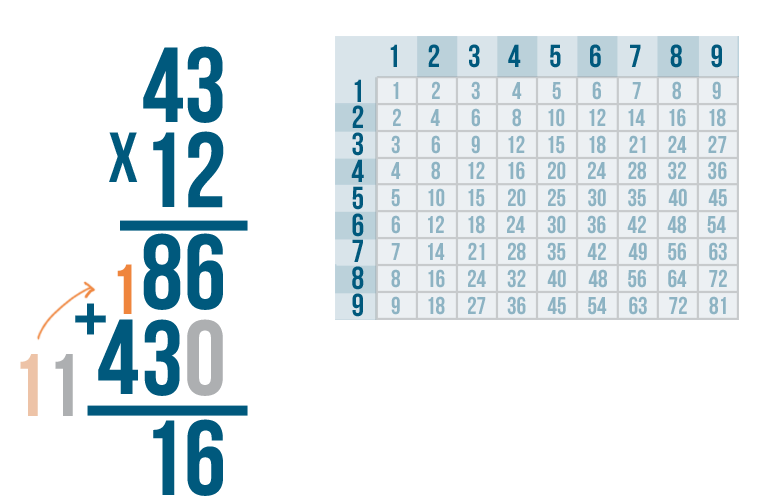
Write the left digit, 1, under the 8 and 3... then carry the right digit and place it above the digit to the left.
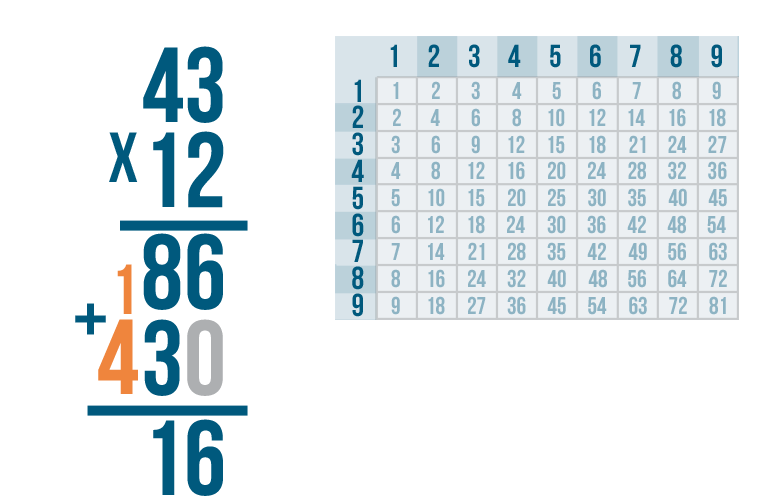
Finally, we'll add 4 to the 1 we just carried.

4 + 1 is 5.
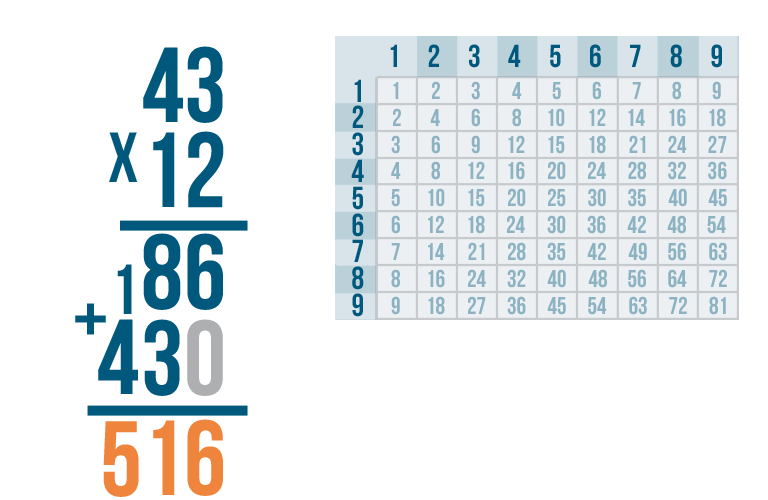
We're done! Our total is 516. In other words, 43 x 12 = 516.

Now you try it. Multiply these two-digit numbers. If you'd like, you can use the times table for help.
Multiplying Two 3-Digit Numbers
Multiplying large numbers always works the same way, no matter how many digits the numbers have. When you're multiplying, be careful about writing the numbers in the correct places. Let's look at a problem with two 3-digit numbers to see how this works with even larger numbers.
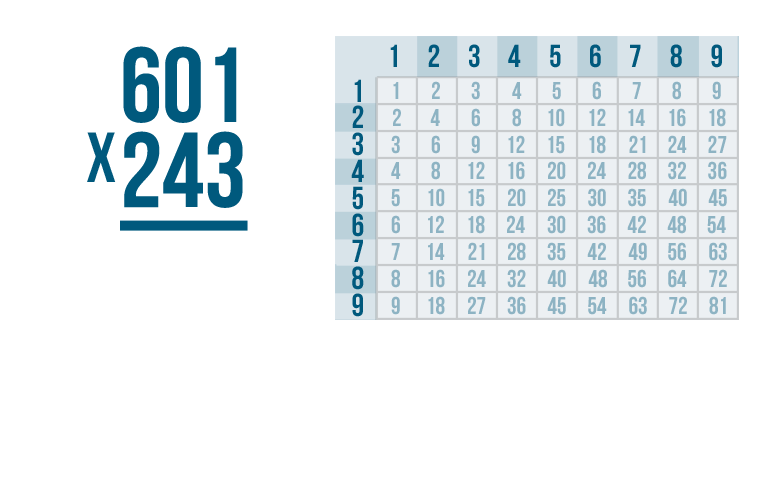
Let's try this problem: 601 x 243.
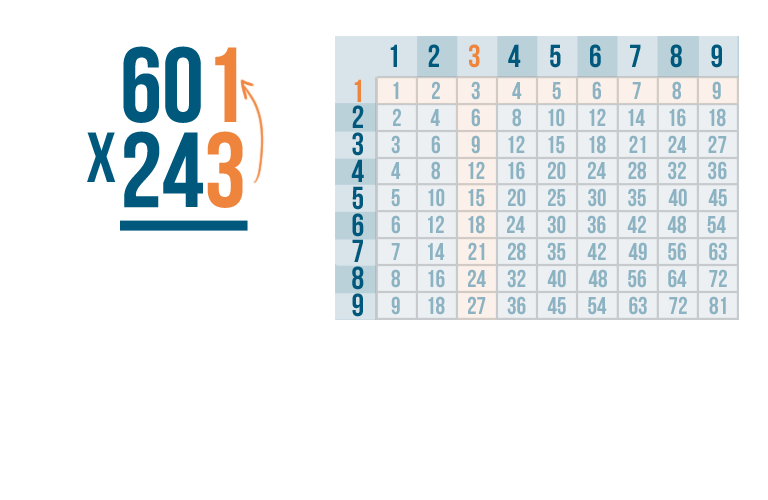
As always, start by multiplying the bottom-right digit by the top-right digit. So 3 x 1.
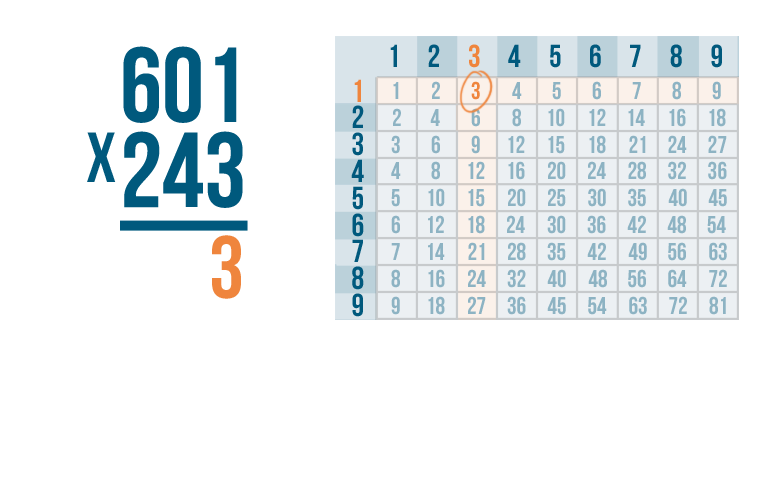
Thanks to our times table, we know that 3 x 1 is 3. Write the 3 underneath the line, to the far right.
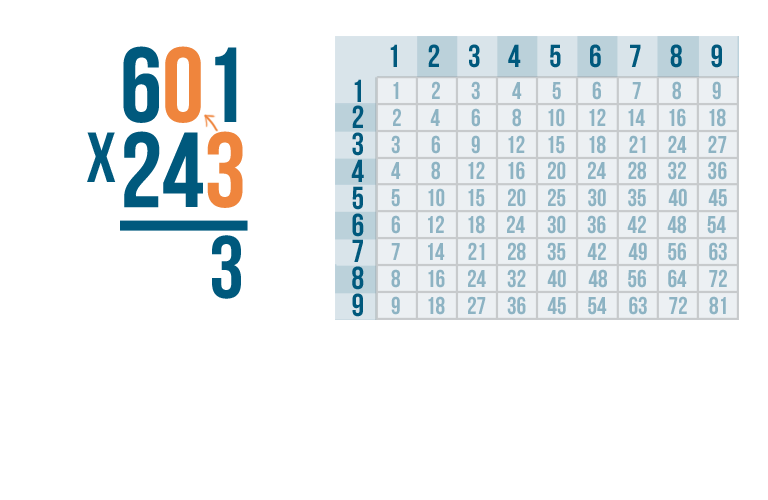
Now multiply 3 by the next number, 0.
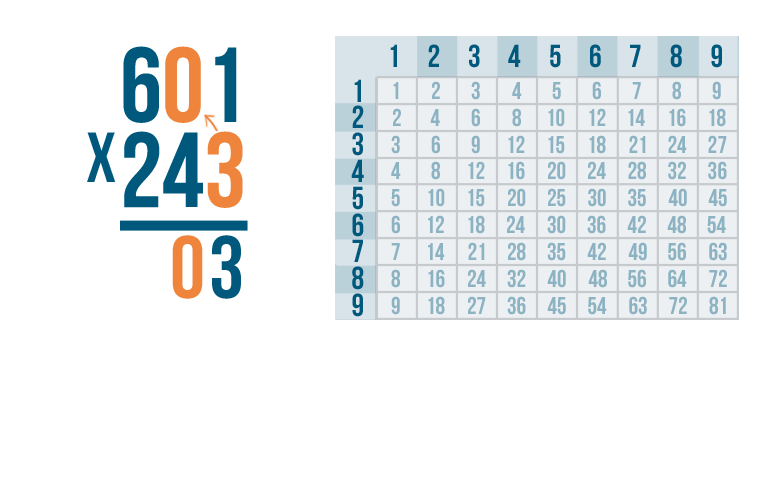
Anything times zero is 0, so write 0 underneath the line, next to the 3.

Next, 3 x 6.
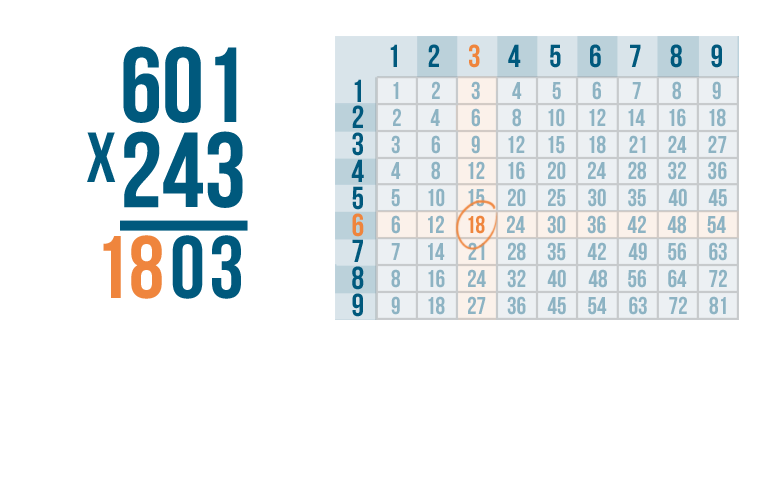
3 x 6 = 18. Write 18 beneath the line.
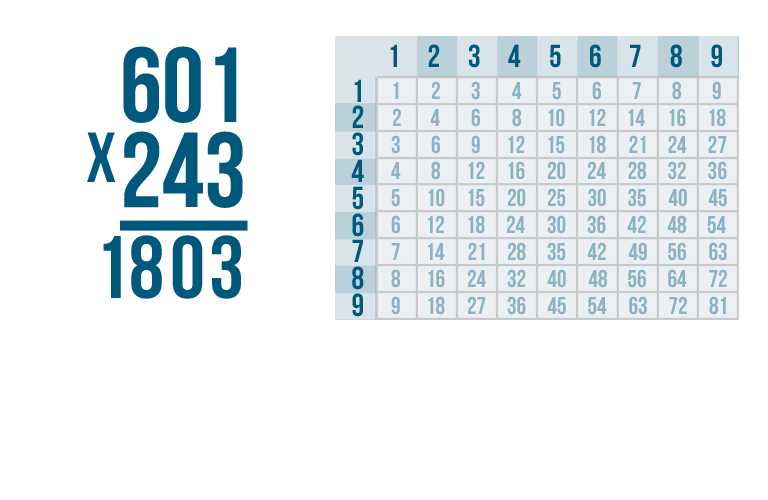
We're done with the first digit in the bottom number.

Next, multiply by the second number on the bottom, 4.
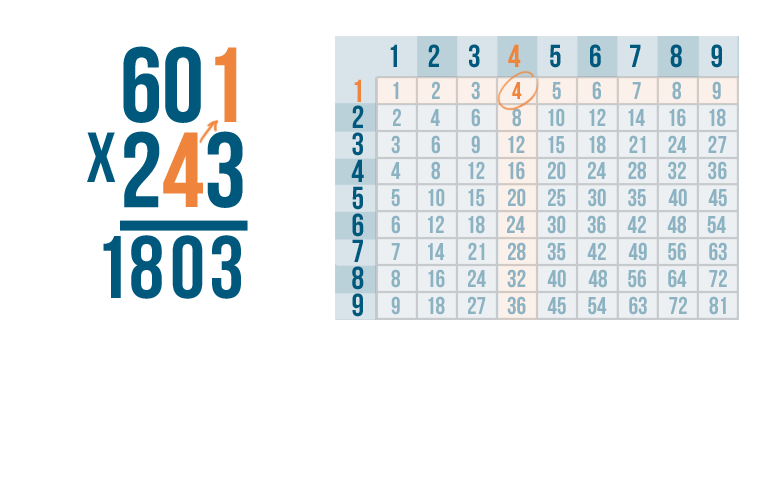
4 x 1 is 4. Remember, you're not going to write the 4 all the way to the right.
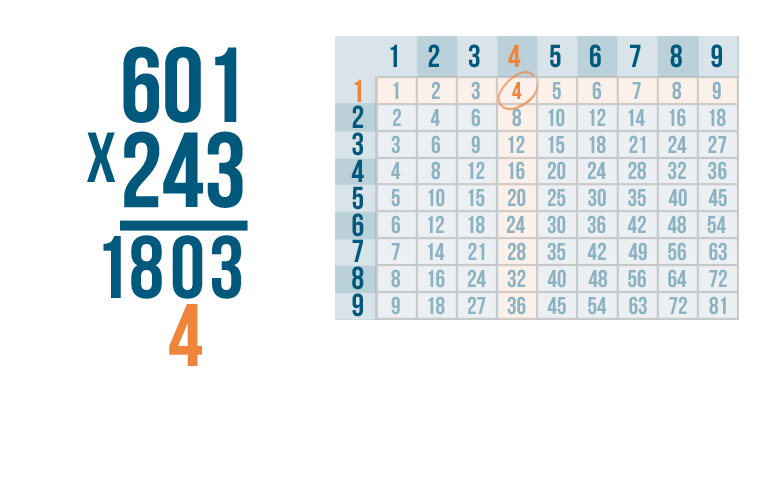
Instead, write the 4 one place to the left, underneath the second set of numbers.

11a

Now, let's move on to the next number on top — 0.

4 x 0 is 0. Write the 0 underneath the line.

Next, multiply the 4 by the final digit in the top number — 6.

4 x 6 is 24. Write 24 underneath the line.

We're ready to multiply by the final digit in our bottom number — 2.
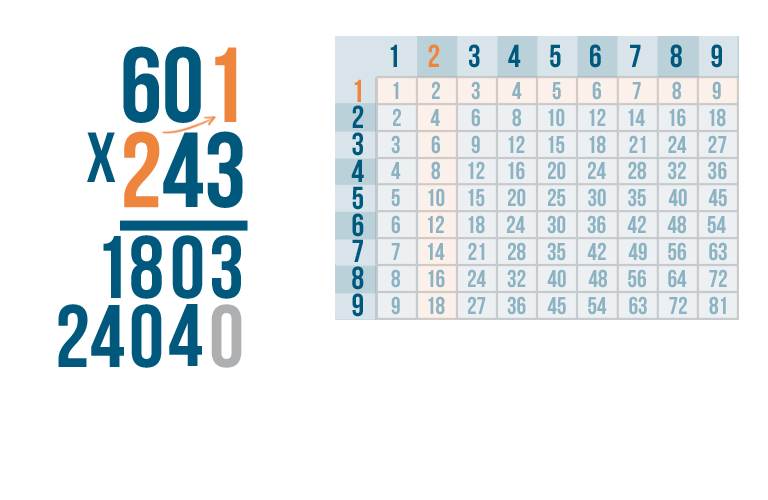
As always, start with the top right digit,1.

2 x 1 is 2.
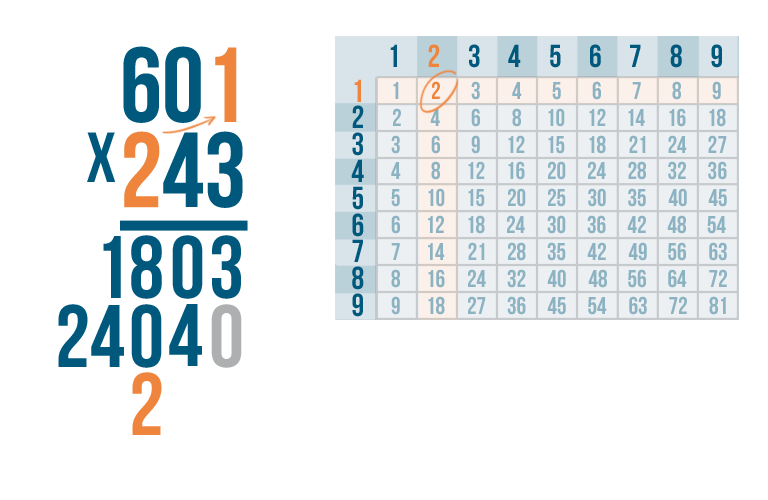
We'll write 2 beneath the line, two spaces over from the right.
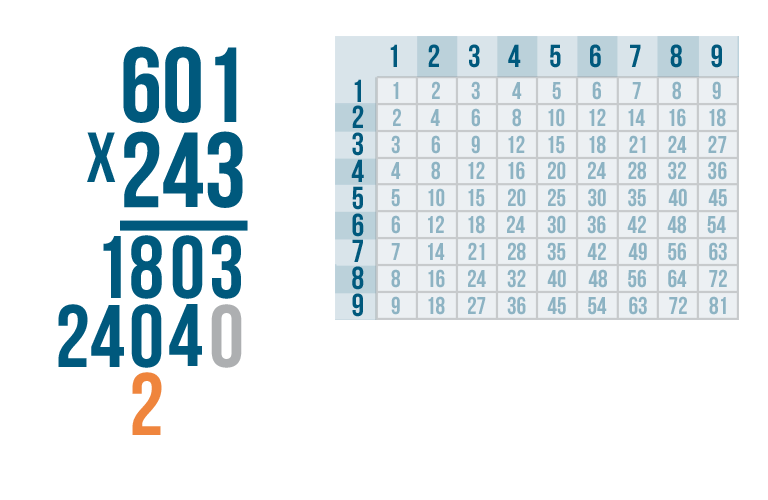
Notice where we put the 2.

When we multiplied with the first digit in the bottom number...
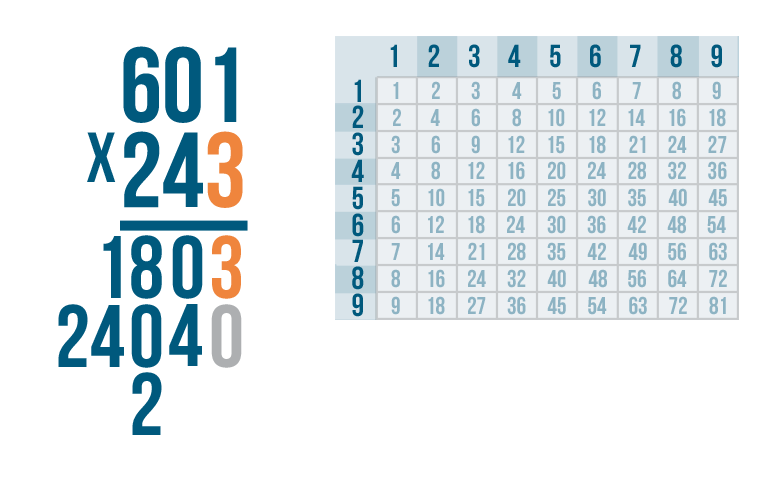
When we multiplied with the first digit in the bottom number... we lined up the product all the way to the right.
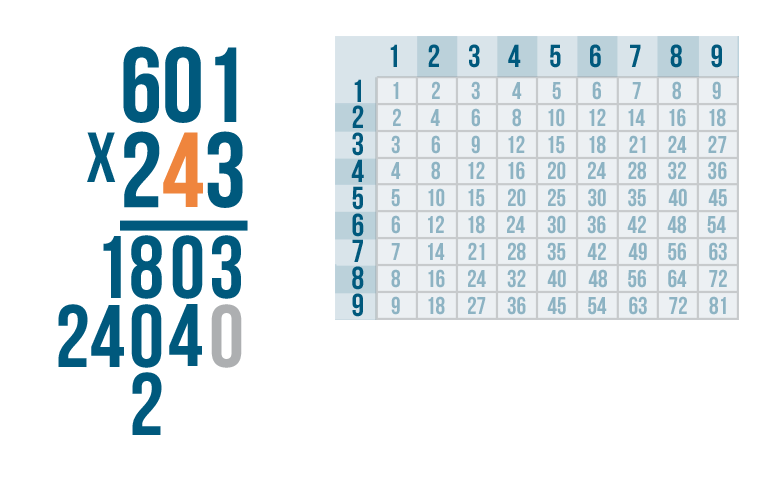
When we multiplied with the second digit...
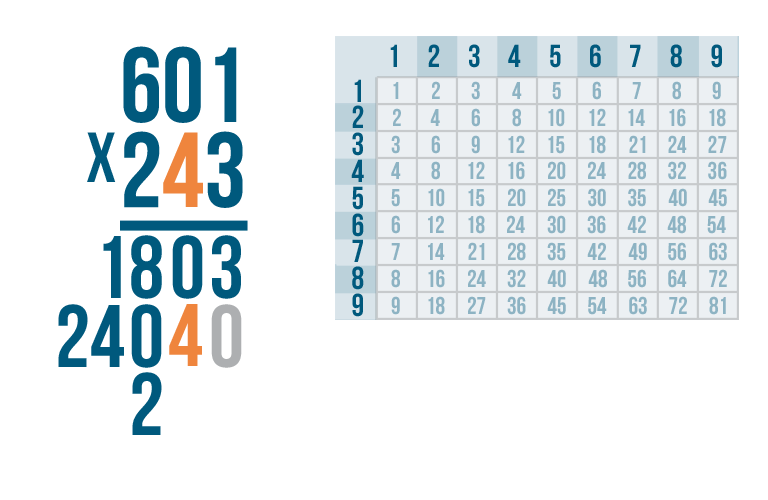
When we multiplied with the second digit... we wrote the product one space to the left.
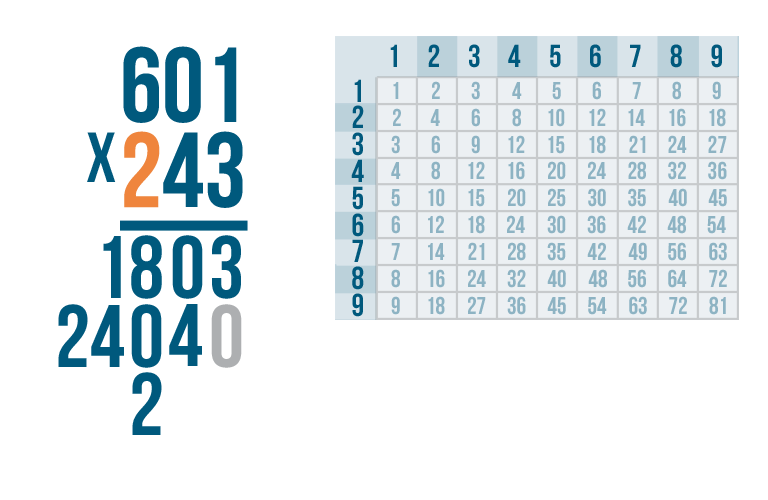
Now that we multiplied with the third digit...
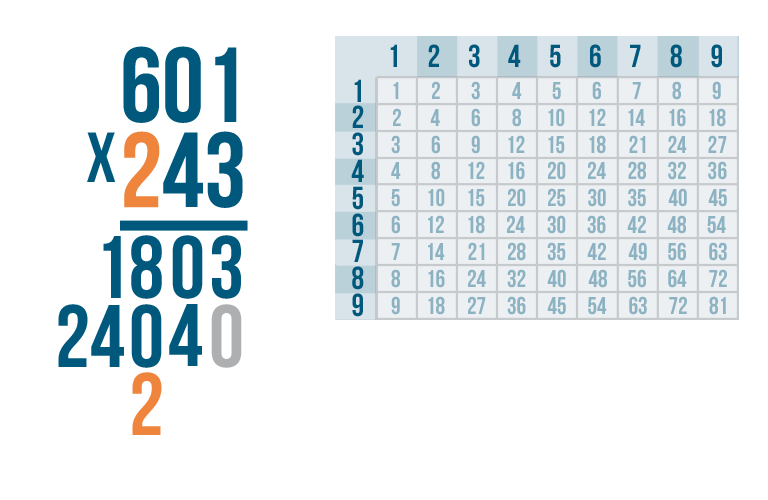
Now that we multiplied with the third digit...we placed the product two spaces to the left.

26a

You might have noticed a pattern. Each time we multiplied with a new digit, we wrote the product one digit further to the left. This is true no matter how many digits are in the numbers you're multiplying with.

Let's get back to our problem. We just multiplied 2 x 1.
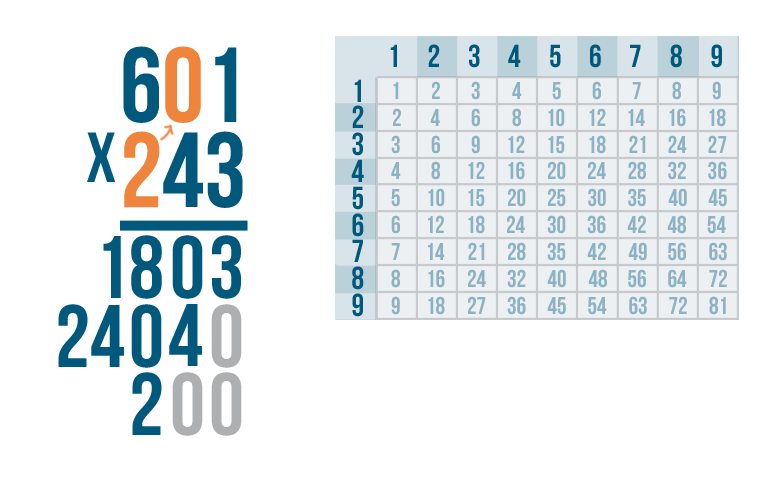
The next digit is 0.

2 x 0 is 0. Write 0 underneath the line.

Finally, multiply 2 x 6.
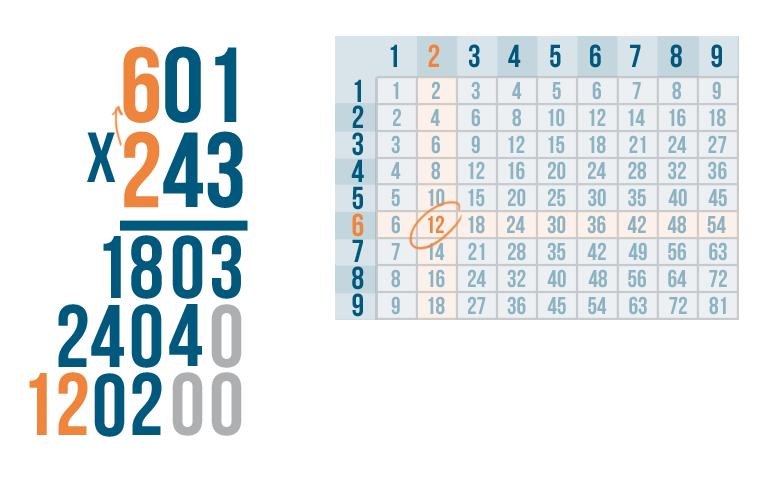
2 x 6 is 12. Write 12 below the line.

Time to add. As always, start with the digits on the far right. Here, that means we're adding 3 + 0 + 0.

3 + 0 + 0 = 3. Write 3 directly under the digits we just added.

Next, we'll add 0 + 4 + 0.
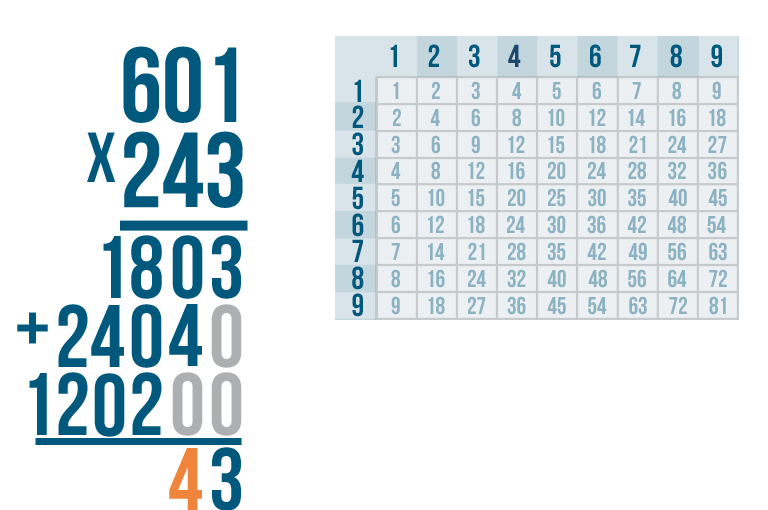
0 + 4 + 0 is 4.
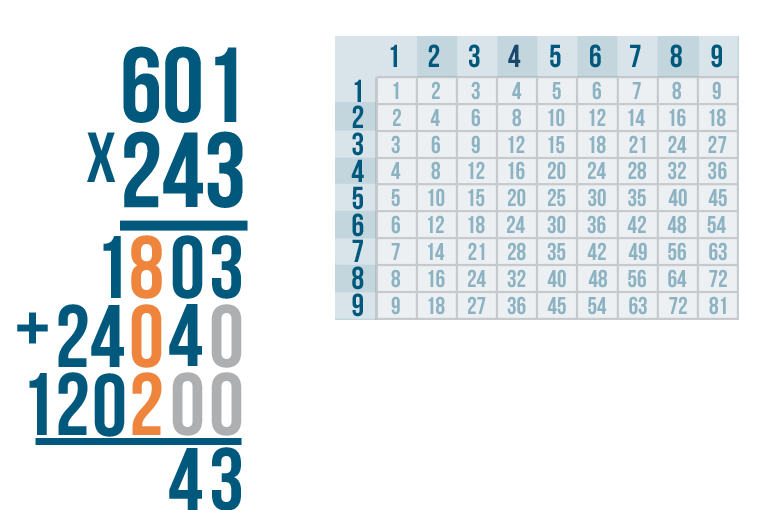
Now, the next set of digits, 8 + 0 + 2.
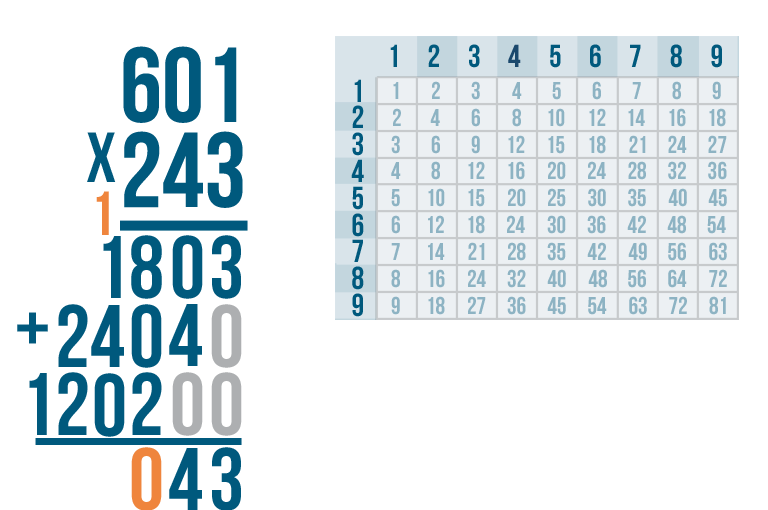
8 + 0 + 2 = 10. 10 is a two-digit number, so we'll have to carry. Write the 0 beneath the digits we just added, and place the 1 above the next set of digits.

It's time to add the 1 we just carried. That means we're solving for 1 + 1+ 4 + 0.

1 + 1 + 4 + 0 = 6. Write 6 below the line.

Next, 2 + 2.
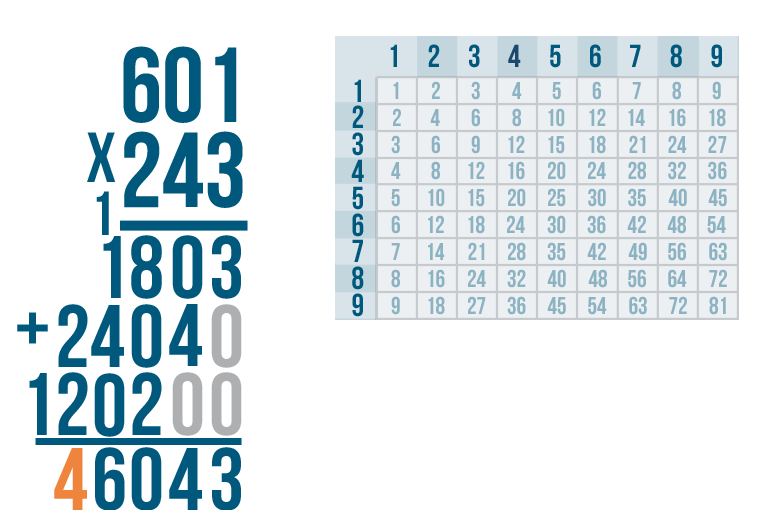
2 + 2 = 4. Write 4 beneath the line.
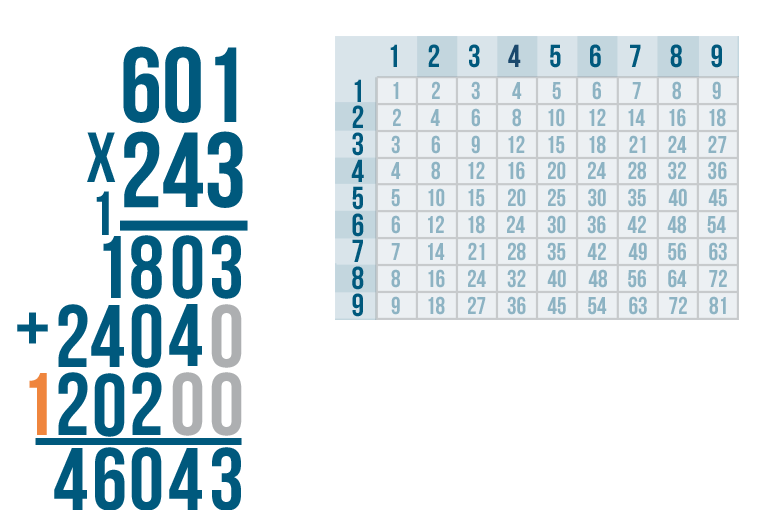
There's only one digit to the left — 1.
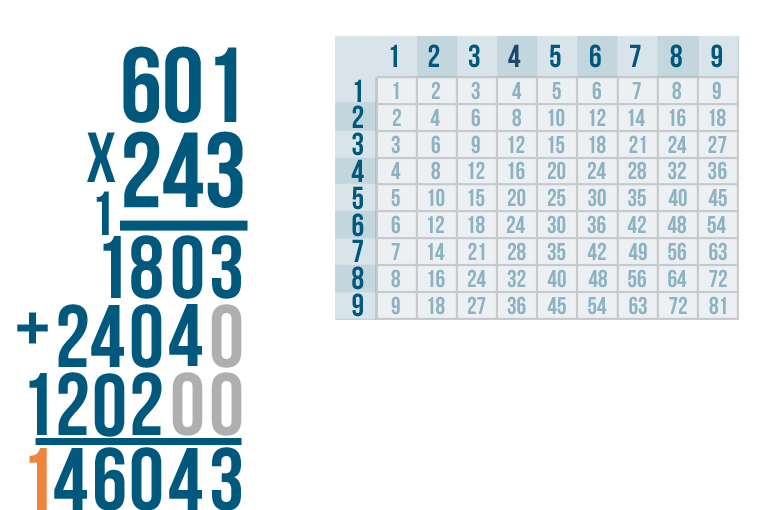
One plus nothing is 1, so we'll write 1 below the line.

We're finally done! Our total is 146,043, or one hundred thousand forty-six and forty-three. 601 x 243 = 146,043.

What a huge number! If that problem seemed complicated, don't worry. You'll rarely need to multiply such large numbers. When you do, you can always use a calculator. Still, it's good to know how. If you can multiply these problems, you can multiply anything.
